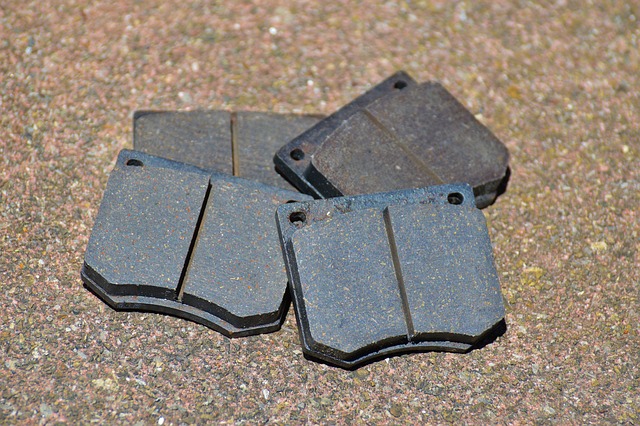Contents
How long will 6mm of brake pads last?
In the intricate world of vehicle maintenance, there are few components as critical as your brake pads. These unassuming yet vital parts play a pivotal role in ensuring your vehicle comes to a safe and controlled stop. Understanding the lifespan of your brake pads and knowing when to replace them is not just about keeping your car in tip-top shape; it’s a matter of safety.
In this article, we delve into the often-asked question: “How long will 6mm of brake pads last?” We aim to shed light on the factors that influence the wear and tear of these essential components and provide guidance on when it’s time to consider a replacement. Your brake pads are the unsung heroes of every journey, and knowing when to show them some well-deserved attention can make all the difference in your vehicle’s performance and, more importantly, your safety.

Understanding Brake Pad Wear
A. The Concept of Brake Pad Thickness:
To understand the lifespan of brake pads, it’s crucial to grasp the concept of brake pad thickness. When brake pads are new, they typically have a thickness of approximately 12 millimeters. This initial thickness plays a pivotal role in determining how long they will last and how effectively they can stop your vehicle.
B. Measuring Brake Pad Wear:
Brake pad wear is typically measured in terms of remaining thickness. As you drive and use your brakes, the friction generated between the brake pad and the rotor gradually wears down the pad’s material. This reduction in thickness affects the pad’s ability to grip the rotor and generate the necessary friction for effective braking.
For example, if your brake pads started with a thickness of 12 millimeters and have worn down to 6 millimeters, you have used up half of their original thickness. This remaining thickness is a critical factor in determining how long your brake pads will continue to function effectively before they require replacement.
Understanding this relationship between initial thickness and remaining thickness is essential in determining the remaining lifespan of your brake pads and when it’s time to consider replacing them for safe and reliable braking performance.
Factors Influencing Brake Pad Lifespan
A. Driving Habits:
One of the most significant factors influencing how long your brake pads will last is your driving habits. Aggressive driving, characterized by frequent hard braking and rapid deceleration, accelerates brake pad wear. Such driving habits generate higher levels of heat and friction, causing the brake pads to wear down more rapidly.
B. Vehicle Type:
The type of vehicle you drive also plays a role in determining brake pad lifespan. Heavier vehicles, such as trucks and SUVs, exert more force on the brake pads when coming to a stop. This additional weight can lead to faster wear and tear on the brake pads compared to lighter vehicles.
C. Brake Pad Material:
The material composition of your brake pads is a critical factor. Different brake pad materials have varying degrees of durability. Common brake pad materials include semi-metallic, ceramic, and organic. Semi-metallic pads tend to be more durable and are often found on vehicles with higher performance capabilities. Ceramic pads are known for their low dust and noise levels but may wear faster under heavy use.
D. Environmental Conditions:
The environmental conditions in which you drive can also impact brake pad wear. If you frequently drive in hilly or mountainous areas, you may find that you use your brakes more often and more aggressively to navigate steep descents and sharp curves. This can result in accelerated wear.
E. Maintenance and Inspection:
Regular maintenance and inspections are essential for extending the lifespan of your brake pads. Well-maintained brake systems, with properly lubricated components and smooth operation, are less likely to experience premature wear.
In summary, the lifespan of your brake pads is influenced by various factors, including your driving habits, the type of vehicle you own, the material of your brake pads, environmental conditions, and the level of maintenance and care your brake system receives. It’s essential to be mindful of these factors to gauge when it might be time to replace your brake pads for optimal safety and braking performance.
Monitoring Brake Pad Wear
A. Visual Inspections:
Monitoring the wear of your brake pads can be done through visual inspections. To do this, follow these steps:
Wheel Removal: Safely lift and secure your vehicle. Then, remove the wheel or wheels to access the brake components.
Brake Pad Visibility: Examine the brake pads through the openings in the caliper. Most brake systems allow you to inspect the brake pads without disassembling the caliper.
Wear Indicator: Many brake pads are equipped with wear indicators. These are small metal tabs that make contact with the brake rotor when the pad wears down to a certain thickness. If you see these indicators touching the rotor or if the pad material is significantly thinner than it was when new, it’s a sign that replacement is necessary.
Comparative Inspection: You can also compare the thickness of the brake pad to the surrounding metal components. If the pad is noticeably thinner than the metal backing plate, it’s likely time for replacement.
B. Signs of Brake Pad Wear:
In addition to visual inspections, it’s essential to be aware of common signs that indicate brake pad wear. These include:
Squeaking or Squealing: As the brake pad material wears down, it can produce a high-pitched squeaking or squealing noise when you apply the brakes. This noise is often caused by the wear indicators mentioned earlier.
Grinding: If the brake pads wear down to the point where the metal backing plate makes contact with the brake rotor, you may hear a grinding noise when braking. This is a severe sign of excessive wear and requires immediate attention.
Reduced Braking Performance: If you notice that your vehicle’s braking performance has decreased, such as longer stopping distances or a soft brake pedal, it could be due to worn brake pads. Reduced braking efficiency is a clear indication that the pads need replacement.
Regular visual inspections and attentiveness to these common signs of brake pad wear are crucial for maintaining your vehicle’s braking system. By identifying wear early and addressing it promptly, you ensure the safety and longevity of your braking components.
When to Replace 6mm of Brake Pads
As you closely monitor the wear of your brake pads and keep an eye on their thickness, you may wonder when it’s advisable to replace brake pads that have worn down to 6mm of thickness remaining. While the specific measurement for replacement can vary depending on the manufacturer’s recommendations and local regulations, a general guideline is to consider replacement when the thickness of your brake pads reaches around 3 to 4mm.
The reason for this guideline is safety. As brake pads wear down, the friction material that makes contact with the brake rotor diminishes. Thinner brake pads have reduced braking effectiveness, which can lead to longer stopping distances and decreased control over your vehicle, especially in emergencies.
While 6mm of thickness is still a relatively safe margin, it’s wise to plan for replacement shortly, considering that wear can accelerate, particularly if you have aggressive driving habits or regularly navigate hilly terrain. Replacing your brake pads at the 3 to 4mm thickness range ensures that your braking system operates at its best and provides the stopping power needed for safe and controlled driving.
Ultimately, the decision to replace 6mm of brake pads should be guided by a combination of factors, including the manufacturer’s recommendations, local regulations, your driving habits, and, most importantly, your commitment to safety. Staying proactive and addressing brake pad wear within the recommended thickness range is a responsible approach to vehicle maintenance and ensuring your safety on the road.
Importance of Timely Brake Pad Replacement
A. Safety First:
Timely brake pad replacement is not merely a matter of maintenance; it’s a fundamental aspect of road safety. Your vehicle’s ability to stop quickly and efficiently in response to various road conditions and unexpected obstacles relies heavily on the condition of your brake pads. When you replace them within the recommended thickness range (around 3 to 4mm), you ensure that your braking system operates at its full potential, providing you with the safety and control needed to navigate the roads.
B. Performance Implications:
Beyond safety, timely brake pad replacement also has performance implications. When your brake pads are well-maintained and within their optimal thickness range, your vehicle’s braking performance is at its peak. This means shorter stopping distances, improved control, and a more responsive brake pedal. It’s not just about safety; it’s about enjoying a more enjoyable and stress-free driving experience.
C. Risks of Excessively Worn Brake Pads:
Driving on excessively worn brake pads poses several risks:
Increased Stopping Distances: Excessively worn brake pads result in increased stopping distances. This means that in emergencies, your vehicle may not come to a stop as quickly as needed, increasing the risk of accidents.
Reduced Control: Thin brake pads reduce your ability to control your vehicle during braking. This can lead to skidding and loss of control, particularly in wet or slippery conditions.
Damage to Brake Components: Driving on worn brake pads can cause damage to other brake components, such as the brake rotor.
Noise and Vibration: Excessively worn brake pads can lead to noisy and rough braking, affecting your comfort and the vehicle’s overall performance.
In summary, the importance of timely brake pad replacement cannot be overstated. It’s not only a matter of safety but also a way to optimize the performance of your vehicle’s braking system. Excessively worn brake pads not only compromise safety but also introduce various risks that can affect your vehicle’s overall performance and result in more extensive and costly repairs. Replacing brake pads within the recommended range ensures that you continue to enjoy safe and efficient driving experiences.

Extending Brake Pad Lifespan
A. Safe Driving Habits:
One of the most effective ways to extend the lifespan of your brake pads is to practice safe and considerate driving habits. Avoiding aggressive driving, which includes rapid acceleration, hard braking, and sudden deceleration, can significantly reduce the wear and tear on your brake pads. A smoother driving style not only conserves your brake pads but also contributes to better fuel efficiency.
B. Anticipatory Driving:
Anticipating traffic flow and road conditions can also make a big difference. By looking ahead and gradually reducing your speed instead of slamming on the brakes at the last moment, you can minimize the stress on your brake pads.
C. Downshifting (Manual Transmission):
If your vehicle has a manual transmission, downshifting to slow down instead of relying solely on the brakes can help preserve the life of your brake pads. Downshifting engages the engine to assist in braking.
D. Regular Maintenance:
Routine maintenance is essential for extending the lifespan of your brake pads. During regular service appointments, your mechanic can inspect the condition of your brake pads and advise you on their wear. They can also ensure that your brake system is well-lubricated and functioning correctly, which further reduces wear and tear.
E. Brake Fluid Maintenance:
Proper maintenance of brake fluid is often overlooked but crucial. Contaminated or deteriorated brake fluid can lead to reduced brake performance and, in some cases, increased brake pad wear. Regular brake fluid flushes and replacements are part of good brake maintenance.
F. Inspections During Routine Maintenance:
Having your brakes inspected during routine maintenance, such as oil changes or tire rotations, can help identify issues early. This allows for timely repairs or replacements, preventing further damage to the brake system.
By following these practices and combining safe driving habits with regular maintenance and inspections, you can significantly extend the lifespan of your brake pads. Not only does this save you money by reducing the frequency of brake pad replacements, but it also enhances your vehicle’s overall safety and performance on the road.
Conclusion
In the world of vehicle maintenance, understanding the lifespan of your brake pads is more than a matter of routine upkeep; it’s a fundamental aspect of road safety and driving performance. This article has shed light on the critical factors influencing brake pad wear and the pivotal question: “When to replace 6mm of brake pads?”
Key Takeaways:
Brake pad wear is not solely determined by time but by factors such as driving habits, vehicle type, and maintenance.
Timely brake pad replacement, typically advised when the thickness reaches around 3 to 4mm, ensures optimal safety and performance.
Driving on excessively worn brake pads carries significant risks, including increased stopping distances and reduced control.
Safe driving habits, anticipatory driving, and regular maintenance can greatly extend the lifespan of your brake pads.
Routine inspections during maintenance appointments help identify issues early, ensuring the longevity and safety of your braking system.
In conclusion, the importance of monitoring and maintaining your brake pads cannot be overstated. By staying mindful of the factors influencing wear, replacing your brake pads within the recommended range, and practicing safe driving habits, you not only enhance your vehicle’s performance but also prioritize your safety on the road. In the intricate world of automotive care, your brake pads are the silent guardians of your journeys, and taking good care of them is a commitment to both safety and driving enjoyment.






